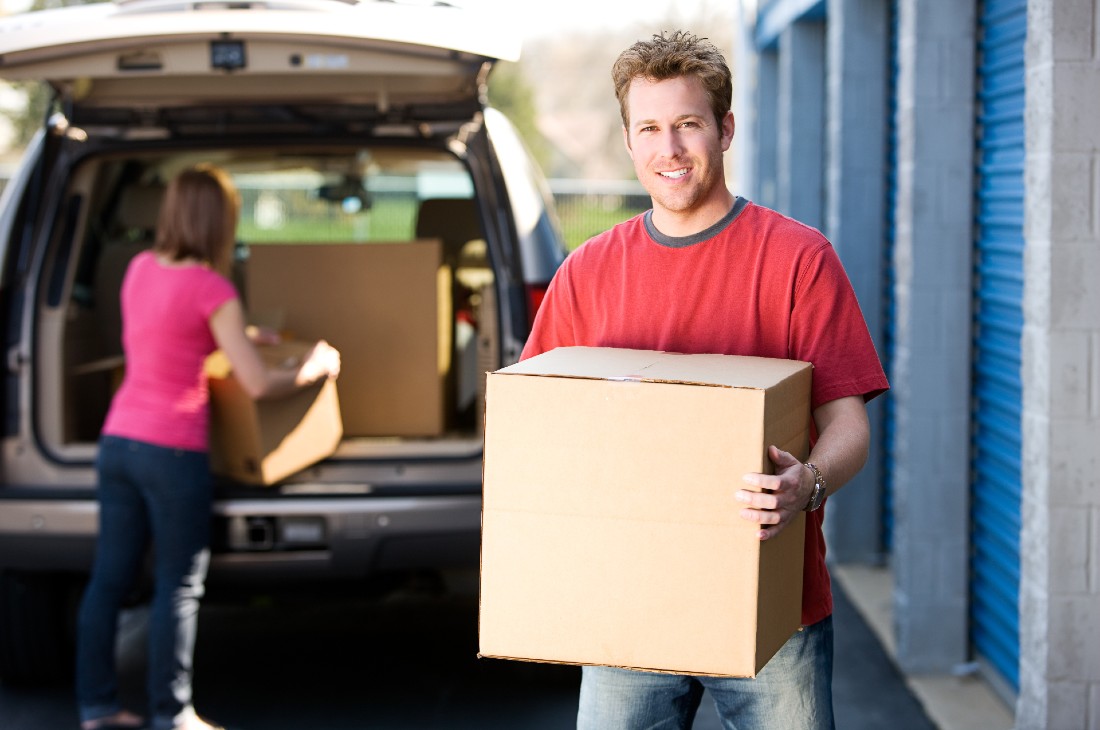We all know that moving can be very stressful and we see it daily at Garden of the Gods Storage as people are constantly moving in or out of their storage unit rentals. Knowing what to expect in a move is the answer to reducing this “moving stress”. By creating a moving checklist, you will be able to stay on task and organized. A moving checklist can make moving more manageable, therefore, reducing stress.
The list will also help you approach moving in a smart way, and gives you steps to follow to get your move done. Read further as we discuss how to make and follow a moving checklist.
First on the List: Decide What Kind of Move You Need
The first task on your moving checklist should be deciding what kind of move you will need. Perhaps a do-it-yourself move is what you plan. You will need to locate a rental truck or moving container.
Maybe a professional moving company is your choice. A moving company can help with packing, unpacking, and heavy lifting. You will need to research and interview moving companies to hire.
After you decide what kind of move you require, finalize your moving dates to help you stay on track.
Easy to Follow Moving Tips
Once you decide on the type of move and finalize the dates, you will need to start packing. This is where your moving checklist will be crucial. Make a list of the items that you are packing. Start to organize items based on common functions, and what room the items were in, and where they will go at the new location. This list makes it easier to keep your items organized and accounted for. Read further for more tips…
- As mentioned above pack similar items together and label each box or container by room and contents.
- Pack a box or bag of essentials like tools that can help with the move, a first aid kit, medications, clean clothes, toiletries and other must-have daily items. That way you will never be without necessities, even in the midst of a move.
- Try to have enough packing supplies. Boxes, tape, bubble wrap, newspapers, scissors, and a marker to label the contents. Try not to fill the boxes too full. Heavy boxes are hard to lift and could break and damage your items.
Now that you have an idea of what goes on a moving checklist, we can move onto how to pack for moving.
You Want to Pack Room-By-Room
Based on the inventory you created on your moving checklist, you can start to pack up room-by-room. When you go to actually pack up your belongings, try to combine them based on their function and room. For example, try to keep kitchen stuff with kitchen stuff and bathroom items together to help you stay organized.
Have your packing supplies ready to go, everything you will need to protect your items from harm during transit. Finally, you will need to label each box for contents and what room it is going to. If the box has fragile items in it, like crystal glasses, or china dishes, you may want to label it “Fragile”. If you are moving from a large to a small home, you may want to consider a storage facility for big items you don’t use often. Do you own an RV or boat and can you park it on your street at your new place or be sure to pre-arrange an RV storage facility.
Moving Checklist For the Kitchen
- Defrost and clean your refrigerator
- pack any refrigerated items that you plan to take in coolers with ice
- pack up any dry and canned foods you plan to take with you to the new home
- pack small appliances like toasters, or blenders. Wrap any cords around the appliance and tape it down to keep things neat.
- Organize your dishes and flatware. Make sure to wrap dishes carefully with your packing supplies. You can use sectioned moving boxes for glasses, as this a safe way to transport them.
Checklist For The Living Room or Den
- Pack up books, CDs, and DVDs in separate boxes and try not to pack them too full. Books can become very heavy.
- Prepare artwork and photographs for the move by carefully wrapping them in bubble wrap or blankets to make them secure for transport.
- Remove light bulbs from lampshades and store them carefully inside boxes. Wrap the bases of your lamps as well, as these can be delicate and prone to break.
- Organize and pack your electronics. Tape the power cables to each electronic along with the remote control, aux cord, or HDMI. For televisions and computers, secure their screen by carefully wrapping them with blankets. Tape any screws to the back of the tv or computer.
- Pack your furniture into the moving truck first. Heavy furniture should go in before moving boxes.
Moving Checklist for Bedrooms
- When packing your closet, pack seasonal clothes first. For formal clothing, consider buying a moving box that comes with a bar to hang your delicate clothes in.
- Pack bedding and pillows
- You can put any mattresses in bed bags to keep them clean and ready for transport.
Moving Checklist For the Dining Room
- Pack up any decorations and wrap them securely in packing supplies
- Roll up any decorative floor rugs
- Pack your dining chairs by removing the legs and placing them in moving boxes. Keep nails for chairs in a plastic bag so you do not lose them.
- Wrap your kitchen table in a blanket so it is ready for transport
Checklist for Bathroom
- Pack towels in a moving box. Gather toilet paper, soap, and any other items to pack together.
- Organize your jewelry and toiletries. Pack them in a clearly labeled box for easy access when you get to the new house.
Laundry Room Moving Checklist
- Throw away fabric softener and detergent. These can be hazardous to move.
- use your laundry hampers as additional moving boxes. Pack clothing in the baskets for transport.
- before you move your washer and dryer disconnect all components like the washer hose, and dryer vent. Tape the cord to the appliances for transport.
Garage, Storage Unit, or Shed Moving Checklist
- Throw away paint, weed killer, and fertilizer. They can be dangerous to move.
- Drain your items of gasoline-like in your lawnmower, snow blower, or grill.
- Pack recreational items like bicycles, skateboards, roller skates, and pool items.
- Pack the cushions of your lawn furniture and put them in boxes or trash bags for transport.
- Pack your tools. Some tools can be wrapped in towels, like hammers, making them safer for moving.




